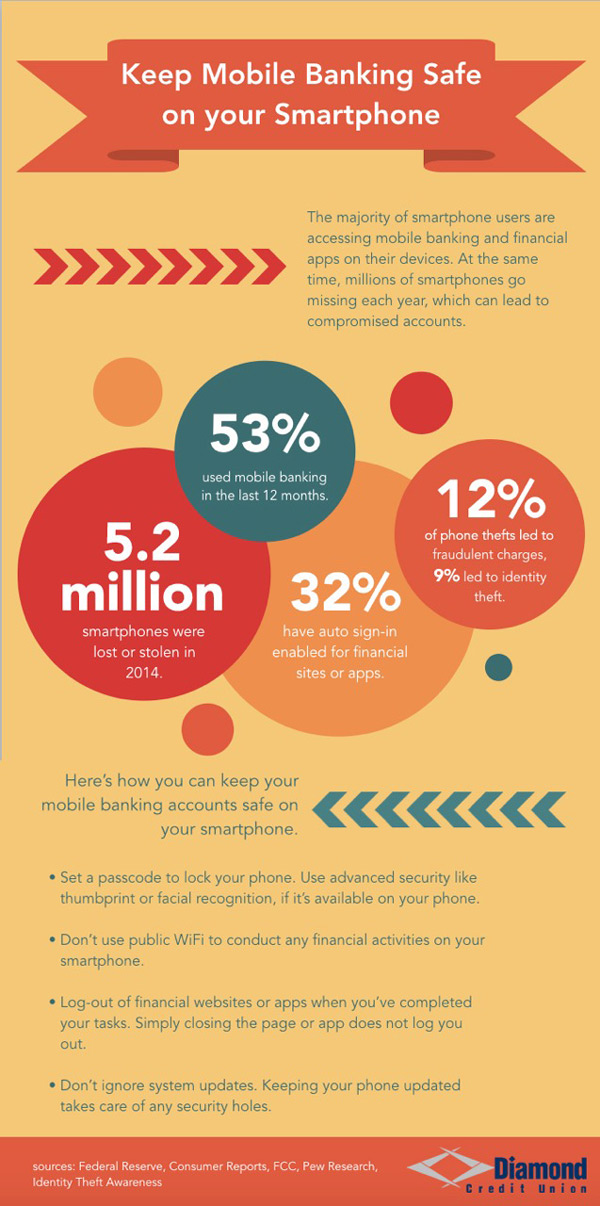Being able to handle financial “to-dos” like paying bills, repaying a friend, checking account balances, or transferring funds, while on the go, can be a lifesaver. For all the conveniences that mobile banking websites or apps have brought us, they also can open you up to foul play, if your smartphone is ever lost or stolen. Consider these statistics on mobile banking use and smartphone safety.

Using a Smartphone for Mobile Banking
- 53% of smartphone owners with a bank account have used mobile banking in the past 12 months.
- 28% of smartphone users made a mobile payment in the last 12 months.
Smartphones Gone Missing
- In 2014, 2.1 million Americans had phones stolen and another 3.1 million smartphones were lost.
- 44% of phone theft victims accidentally left their phone behind in a public setting where it was later snatched up.
- 68% of victims were unable to recover their device after the theft occurred
Protecting Your Smart Phone
- 28% of smartphone owners do not use a screen lock or other security features to protect access to their phone.
- 32% of smartphone owners have auto sign-in enabled for financial websites or apps.
- About 12% of phone thefts lead to fraudulent charges and 9% to identity theft.
sources: Federal Reserve, Consumer Reports, FCC, Pew Research, Identity Theft Awareness
Protect Your Mobile Banking Information
Here are steps that you should take right away to secure your phone and protect your mobile banking information, in the event that it goes missing.
- Set a passcode – Some phones even have thumbprint or facial recognition to lock/unlock your phone.
- Don’t use public WiFi – Avoid logging on to your credit union’s online banking platform or banking apps while using public WiFi (coffee shops, airports, libraries).
- Log out of accounts – Most financial apps will log out users after a certain time frame for their own security. However, you should get into the habit of hitting Log Out when you’ve completed your tasks. Simply closing the website or app does not log you out.
- Don’t ignore system updates – Keep your phone safe from known security weaknesses by installing system updates on your phone or other mobile devices as they become available.
If your phone does go missing, take these actions immediately:
- Contact your financial institution – Let them know your device (with a mobile banking app) is missing. They can flag any associated accounts as compromised.
- Change your passwords – Using another computer or device, change the passwords for your online or mobile banking accounts. Go a step further and also change your email passwords. If a thief uses the Remember/Reset My Password feature on any accounts, he or she will not be able to access your email to retrieve a new password.
- Turn on Lost Mode – With the “lost mode” feature enabled you can: remotely lock a device without a passcode, display a Lost Phone message on the device’s home screen with your contact information, or track the device’s location. Lost Mode can also suspend mobile payments on devices. Lost Mode is available on both Apple and Android devices.
For more information on protecting your financial information, visit our identity theft protection page for news alerts, articles, and more.




